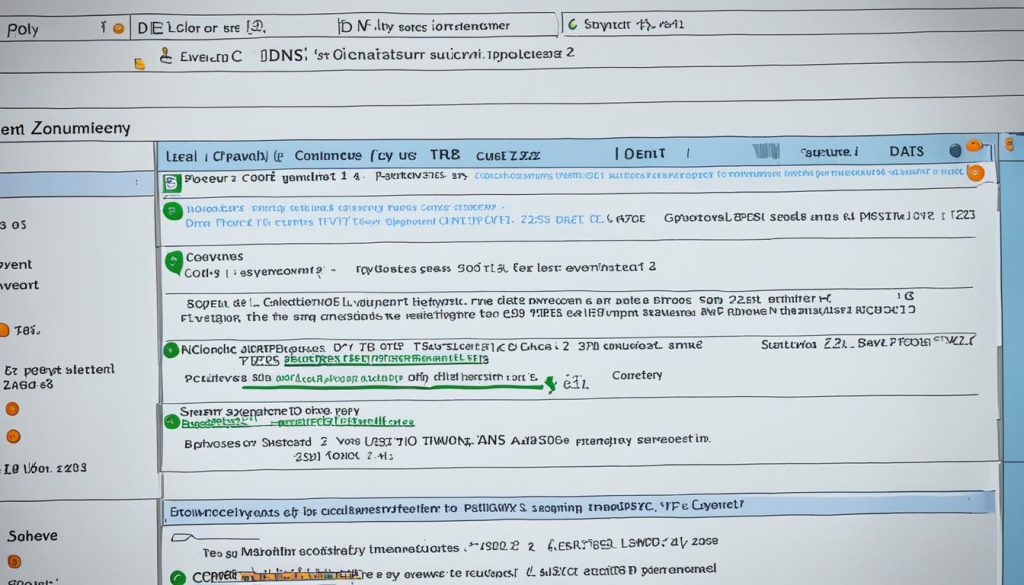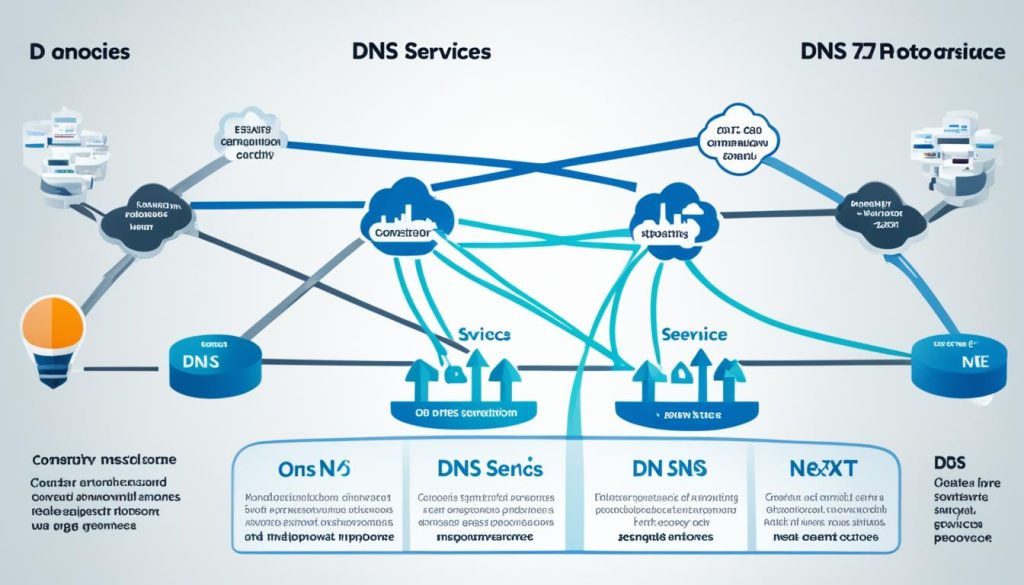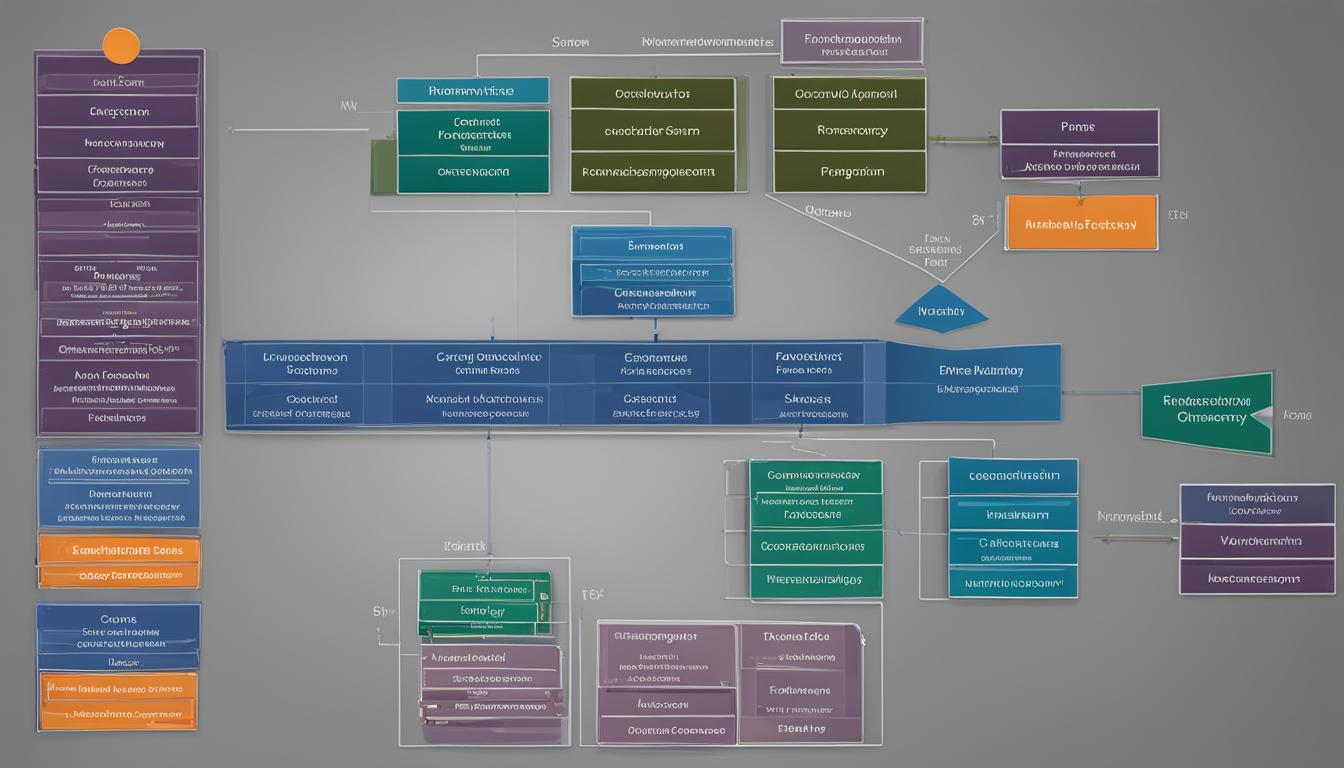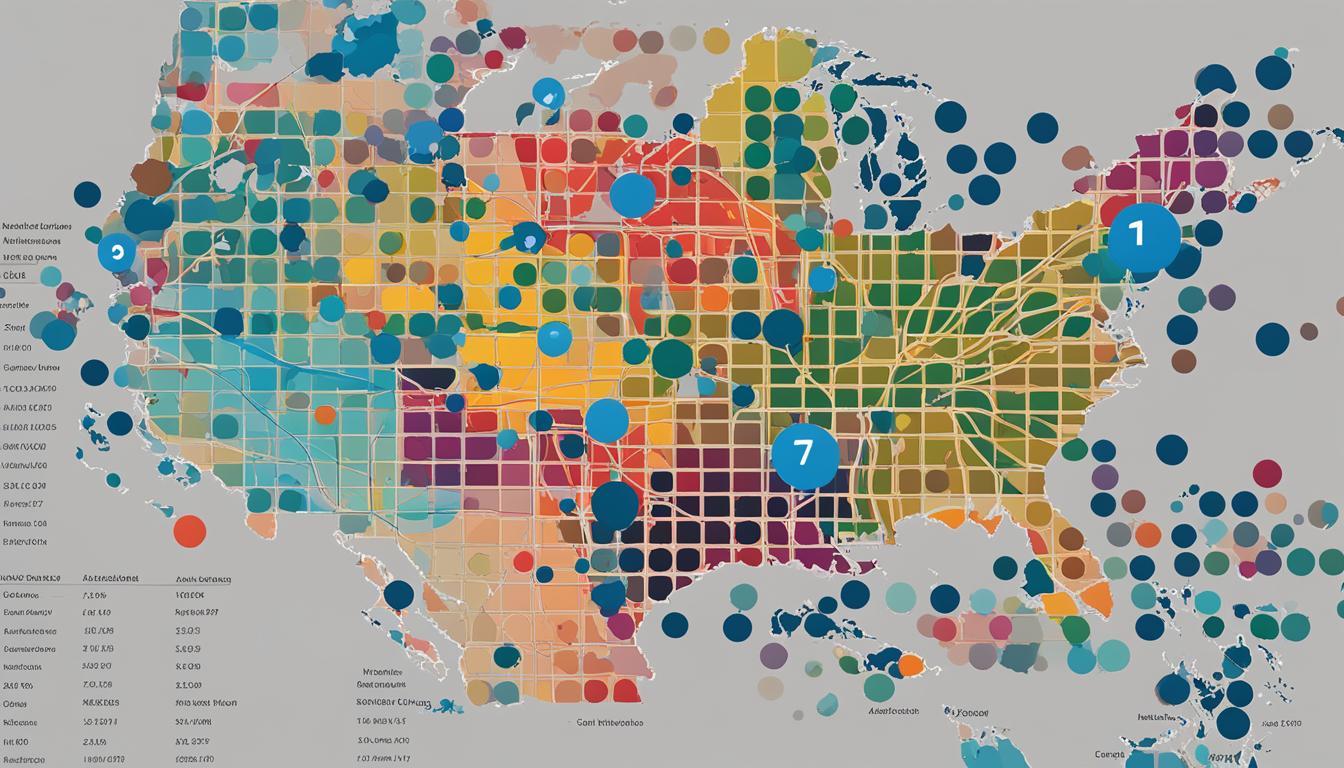What is DNS Zone and how does it work?
If you’ve ever wondered how your web browser magically finds the websites you want to visit, the answer lies in a system called DNS Zone. This powerful technology quietly works behind the scenes to ensure that when you type a website address, it quickly translates it into the correct IP address, allowing you to access the desired webpage. But did you know that there are billions of DNS zones active on the internet today?
That’s right! With over 360 million registered domain names, each with its own DNS zone, the scale and impact of DNS zones are truly remarkable. In this article, we’ll delve deeper into what DNS zones are and how they function, providing you with a comprehensive understanding of this vital component of the internet infrastructure. So, let’s get started!
Key Takeaways:
- DNS zones are distinct parts of the domain namespace delegated to legal entities.
- They are responsible for maintaining DNS components, including authoritative name servers.
- When a web browser needs to find the IP address for a hostname, it performs a DNS lookup and is directed to the authoritative name server for that domain.
- DNS zones provide granular control over specific parts of a domain and its subdomains.
- Proper DNS zone management is crucial for website accuracy and accessibility.
Understanding DNS Zone Types
When it comes to managing DNS, there are different types of zone files that play a crucial role. Let’s take a closer look at these DNS zone types: primary files and cache files.
A primary file is responsible for authoritatively describing a DNS zone and contains the accurate DNS records. It serves as the main reference for the DNS lookup process, ensuring that the correct information is provided to users.
On the other hand, cache files are copies of authoritative DNS zones that are stored in a DNS cache. DNS caches help improve the efficiency and speed of DNS lookups by storing frequently accessed DNS records locally. These cache files act as a temporary backup, allowing DNS resolution to happen faster in subsequent requests.
The structure of a DNS zone file follows a specific format. It starts with a globally configured time to live (TTL), which determines how long other DNS servers and resolvers can cache the records. This is followed by a start of authority (SOA) record, which contains important information like the primary name server for the zone and the email address of the responsible party.
Each line in a zone file represents a DNS resource record (RR) and includes various fields such as name, ttl (time to live), record class, record type, and record data. These resource records provide specific information, such as mapping domain names to IP addresses, identifying authoritative name servers, specifying mail servers, or creating aliases.
As seen in the table above, the zone file consists of different types of resource records such as:
- Name Server Records (NS): Specifies the authoritative name servers for the zone.
- Address Mapping Records (A): Maps domain names to IPv4 addresses.
- IPv6 Address Records (AAAA): Maps domain names to IPv6 addresses.
- Canonical Name Records (CNAME): Creates aliases for domain names.
- Mail Exchanger Records (MX): Identifies mail servers responsible for handling email for the domain.
Understanding the different types of DNS zone files and their structure is essential for effectively managing DNS and ensuring the smooth functioning of your online services.
The Importance of DNS Zones
In the world of domain name system (DNS), DNS zones play a crucial role in effectively managing DNS records. They provide granular control over specific parts of a domain and its subdomains, allowing for efficient organization and maintenance of DNS resources.
One of the key benefits of DNS zones is the ability to have separate administrators for different subdomains within a domain. This means that different teams or individuals can manage and make changes to their specific subdomains without directly impacting the main domain or other subdomains. This level of autonomy and flexibility is essential for large organizations with complex DNS structures.
Proper DNS zone management is vital for ensuring the accuracy and accessibility of websites, email services, and other internet applications. By strategically configuring DNS zones, organizations can streamline the navigation of the internet and enhance the overall user experience for their visitors.
So, how does one go about managing DNS zones effectively? The process involves several steps:
- Creating DNS Zones: The first step is to create separate DNS zones for each desired part of the domain. This can be done through a DNS management interface provided by the domain registrar or hosting provider.
- Delegating Subdomains: After creating the DNS zones, subdomains can be delegated to different administrators or teams. Delegation involves assigning authoritative nameservers to each subdomain, ensuring that DNS queries for those subdomains are properly handled.
- Adding and Modifying Resource Records: Once the DNS zones and subdomains are set up, adding and modifying resource records becomes straightforward. Resource records are the individual entries in the DNS zone files that map domain names to IP addresses, specify mail servers, and perform other DNS functions.
To illustrate the importance of DNS zones, let’s take a look at an example:

| Domain | Main Domain Zone | Subdomain Zone | Benefits |
|---|---|---|---|
| example.com | Main DNS zone for example.com | Subdomain DNS zone for subdomain.example.com |
|
The Benefits of DNS Zones
By utilizing DNS zones, organizations can experience several key benefits:
- Efficient Resource Management: DNS zones allow for precise control over DNS records, making it easier to manage and update resources such as IP addresses, mail servers, and aliases.
- Easy Collaboration: With separate DNS zones, different teams or administrators can work independently on their respective subdomains, facilitating collaboration while maintaining control.
- Enhanced Security: DNS zones enable the implementation of specific security measures for individual subdomains, adding an extra layer of protection against potential threats.
- Scalability: DNS zones provide the foundation for scaling DNS infrastructure as organizations expand their online presence and services.
By understanding the importance and benefits of DNS zones, organizations can leverage the power of granular control to optimize their DNS management processes and ensure the smooth functioning of their online presence.
How DNS Zones and Next-Generation DNS Services Work Together
In today’s rapidly evolving technological landscape, traditional DNS infrastructure alone may not be sufficient to meet the growing demands of websites and online services. This is where the synergy between DNS zones and next-generation DNS services comes into play. Next-generation DNS services, such as those offered by NS1, work hand in hand with DNS zones to optimize performance, improve traffic management, and provide high availability for websites and other online services.
Managed DNS services powered by globally distributed, anycast DNS networks offer advanced traffic management features, ensuring that DNS queries are routed to the closest and fastest available server. With dedicated DNS services, organizations can benefit from fully managed DNS deployment, either on-premise or in the cloud, along with point-and-click traffic management capabilities.
By leveraging next-generation DNS services, organizations can enhance the functionality of their DNS zones and create a more efficient and reliable DNS infrastructure. The benefits are evident:
- Improved Performance: Next-generation DNS services efficiently handle DNS queries, resulting in faster response times and improved website loading speeds.
- Optimized Traffic Management: Advanced traffic management features allow organizations to intelligently distribute traffic across multiple servers, ensuring optimal performance and avoiding bottlenecks.
- High Availability: DNS services backed by globally distributed DNS networks ensure that websites and online services remain accessible even during peak traffic periods or when individual servers experience downtime.

| Traditional DNS Infrastructure | Next-Generation DNS Services |
|---|---|
| Limited scalability and performance | Improved scalability and performance through globally distributed anycast DNS networks |
| Lack of advanced traffic management features | Advanced traffic management capabilities for efficient load balancing and failover |
| Potential single point of failure | Enhanced redundancy and high availability through distributed DNS infrastructure |
DNS Zone Files and Their Structure
In the world of domain name system (DNS) management, DNS zone files play a crucial role in mapping domain names to their corresponding IP addresses. These plain-text files contain valuable information about a domain name and help facilitate seamless communication and data exchange on the internet.
The structure of a DNS zone file consists of various components, each serving a specific function:
Start of Authority (SOA) Record:
The SOA record is the first entry in a DNS zone file and contains essential information about the domain, such as the primary authoritative nameserver responsible for the zone, the responsible party’s email address, and various time values such as the TTL (time-to-live).
NS Records:
NS (Name Server) records specify the authoritative nameservers for the domain. These records point to the servers that hold the DNS information for the domain and are essential for directing DNS queries to the correct location.
A Records:
A (Address) records map domain names to their corresponding IP addresses. They allow web browsers and other network devices to find the correct IP address associated with a domain name, enabling seamless internet connectivity.
MX Records:
MX (Mail Exchange) records are essential for email delivery. These records specify the mail servers that handle email communication for the domain, ensuring that messages are correctly routed and delivered to the intended recipients.
CNAME Records:
CNAME (Canonical Name) records provide aliases for domain names. They allow you to associate a domain name with another domain name or hostname, redirecting incoming requests to the desired destination.
TXT Records:
TXT (Text) records store arbitrary text-based information associated with the domain. They are often used for various purposes, including email server authentication (SPF records), domain ownership verification, and additional information for specific services.
Understanding the structure and components of DNS zone files is essential for effective DNS management. By leveraging this knowledge, administrators can configure and optimize DNS settings to ensure efficient and reliable communication across the internet.
DNS Zone Delegation and its Benefits
DNS zone delegation plays a crucial role in optimizing the efficiency and performance of DNS operations for organizations with multiple subdomains. By dividing a larger DNS zone into smaller zones and assigning them to different DNS servers, the workload on a single server is reduced, resulting in enhanced availability and improved DNS infrastructure.
The process of DNS zone delegation involves adding NS records to the main domain’s zone file, specifying the authoritative servers responsible for handling DNS queries for the subdomain. This delegation enables scalability, allowing organizations to efficiently manage their DNS records and navigate the internet with ease.
With DNS zone delegation, large organizations can achieve localized management, empowering different administrators to make changes and updates to specific subdomains without affecting the main domain. This granular control ensures the accuracy and accessibility of websites, email services, and other internet applications. Additionally, DNS zone delegation improves DNS query resolution, enhancing the overall user experience.
FAQ
What is DNS Zone and how does it work?
What are the different types of DNS zone files?
What is the importance of DNS zones?
How do DNS zones and next-generation DNS services work together?
What is the structure of DNS zone files?
What are the benefits of DNS zone delegation?
- How Strategic SEO Drove Growth for a CPAP E-commerce Brand - July 24, 2025
- Top 3 SEO Companies in Toronto: An Analytical Comparison - July 23, 2025
- SEO for Entry Door Services - April 24, 2025





















Post Comment
You must be logged in to post a comment.